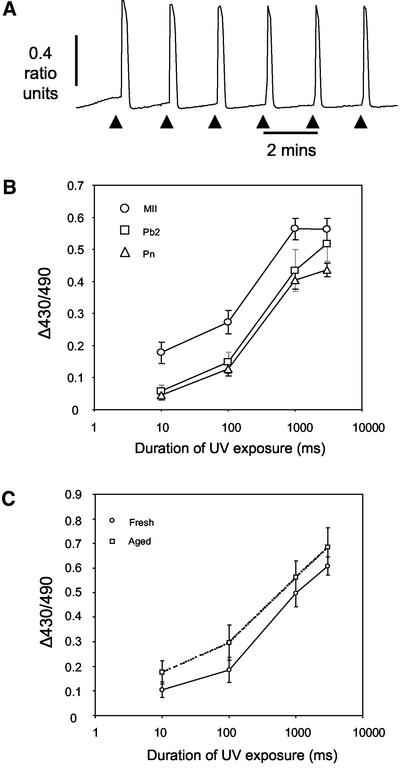Figure 7.
InsP3-induced Ca2+ release is reduced in oocytes that have extruded the second polar body. Oocytes were injected with 50 μM cInsP3 and loaded with Fura red to monitor Ca2+ in response to a series of InsP3 concentrations. Injection of 50 μM cInsP3 provides a reservoir of InsP3 that is not significantly depleted by repeated photolysis events of 1000 ms every 2 min (A). InsP3 was photoreleased in MII oocytes and ethanol-activated parthenogenetic embryos at the Pb2 and Pn stages. The amount of InsP3 released, as measured by the change in Fura red ratio, was controlled by changing the duration of UV light from 10 to 3000 ms. MII oocytes release more Ca2+ for a given dose of InsP3 than those that have been activated (B). Release of Ca2+ in aged and fresh oocytes is similar, suggesting time from ovulation does not unduly affect the amount of Ca2+ released (C). Difference in amount of Ca2+ released in response to InsP3 was not due to oocyte aging.

